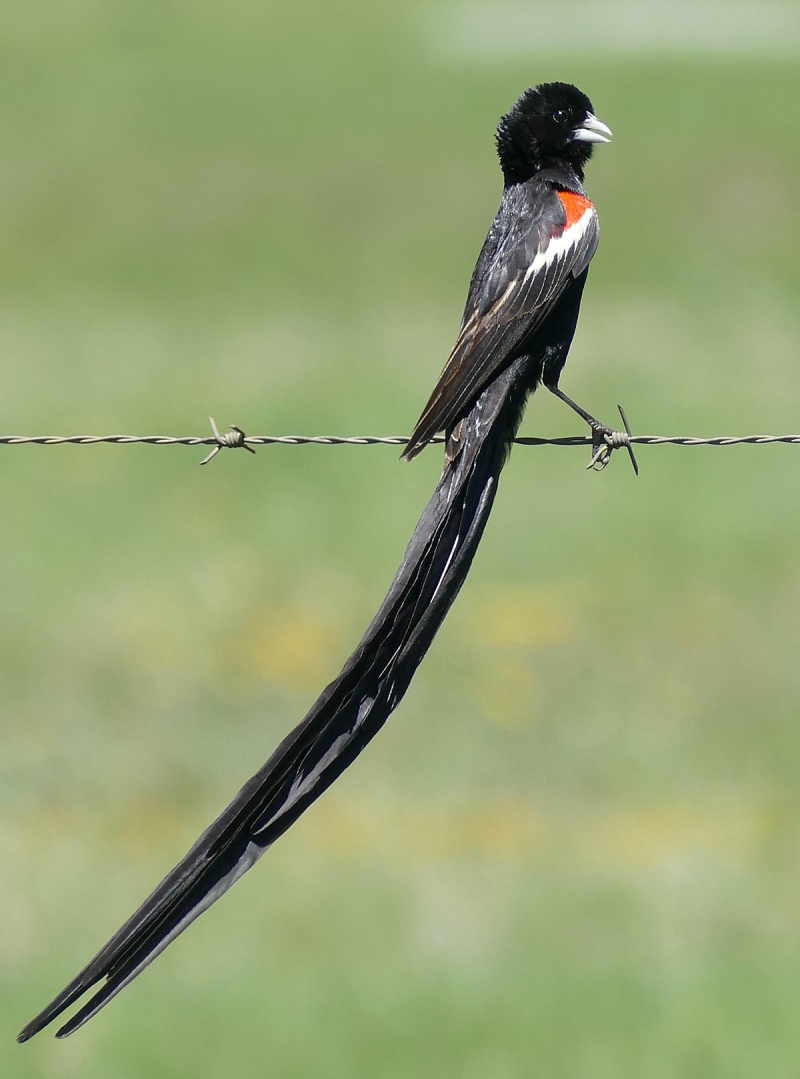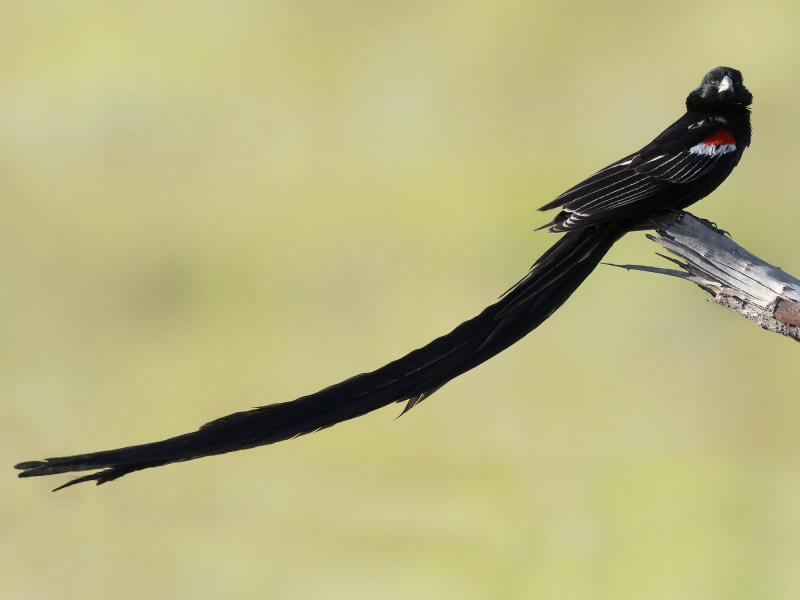Long-Tailed Widowbird
The Long-Tailed Widowbird (Euplectes progne), also known as the "Sakabula", is a species of bird in the family Ploceidae. The species are found in Angola, Botswana, the DRCongo, Kenya, Lesotho, South Africa, Eswatini, and Zambia. The medium-sized long-tailed widowbird is one of the most prevalent birds in the areas it calls home. Adult breeding males have nearly all-black bodies, shoulders (epaulets) of orange and white, long, wide tails, and bluish-white bills. Females are relatively unremarkable, with thin tail feathers, beaks that are the color of horn, and feathers that are striped tawny and black with light patches on the chest, breast, and back.
Male long-tailed widowbirds can be easily identified in flight thanks to their incredibly long tails. They have twelve tail feathers, six to eight of which are between six and eight centimeters (20 inches) long. The male flies with modest wingbeats 0.5 to 2 meters (20 to 78 inches) above his area while the tail is stretched vertically into a deep, long keel below him.












